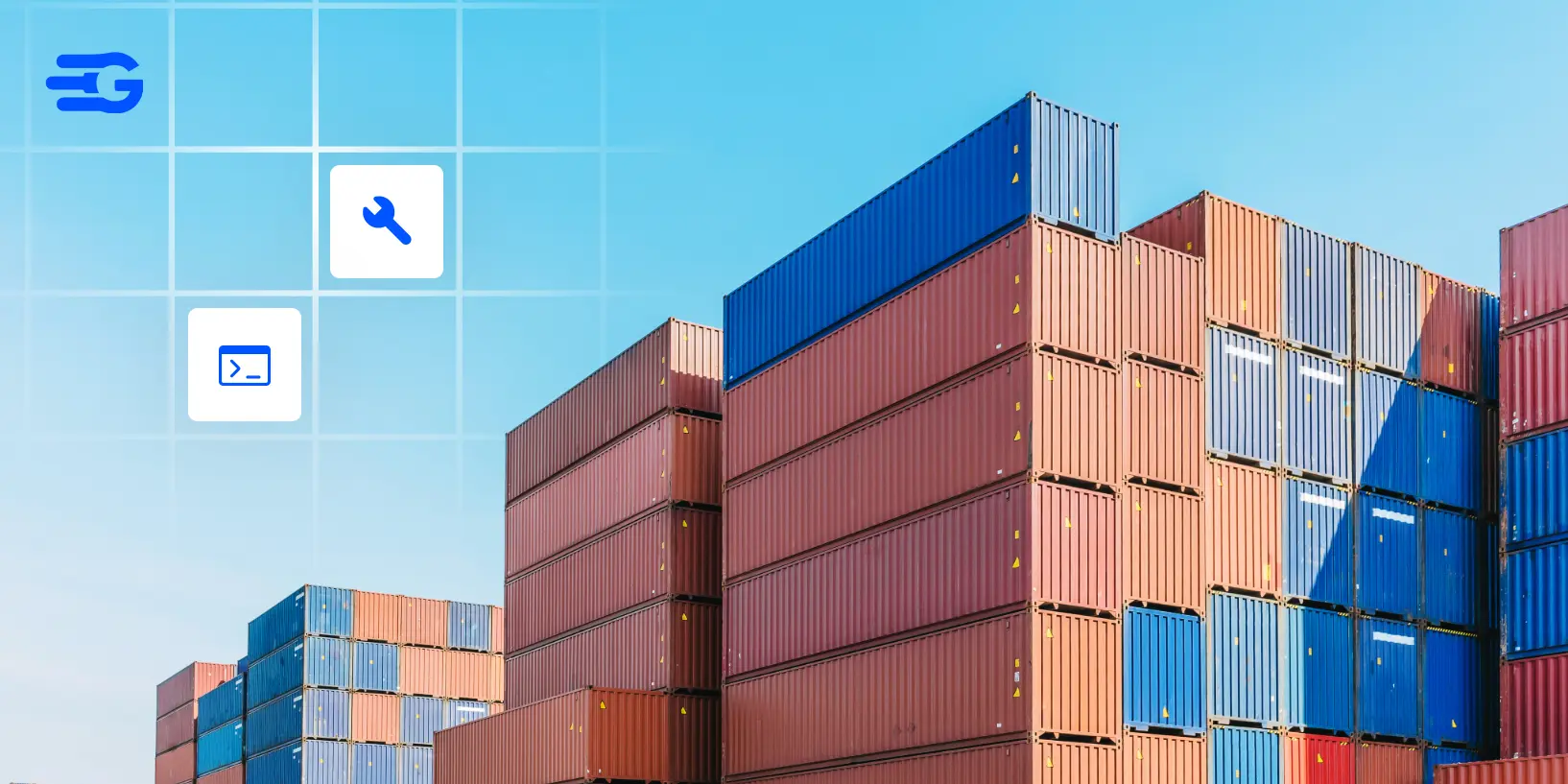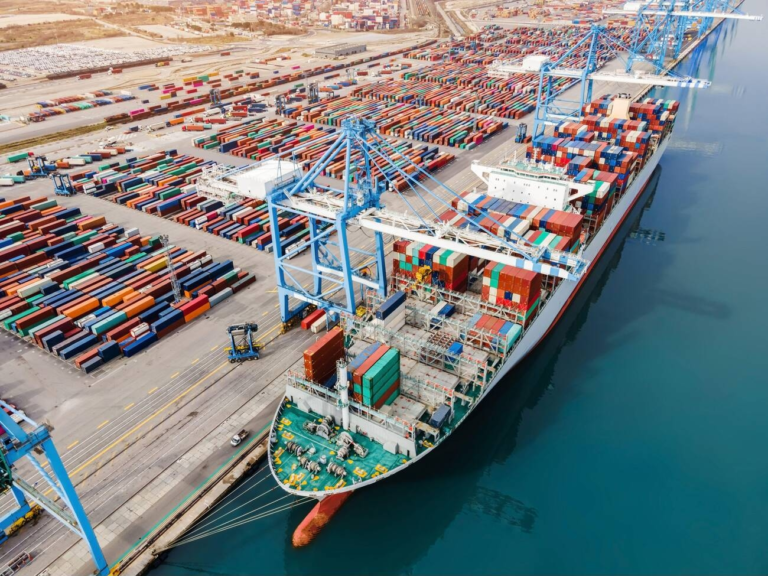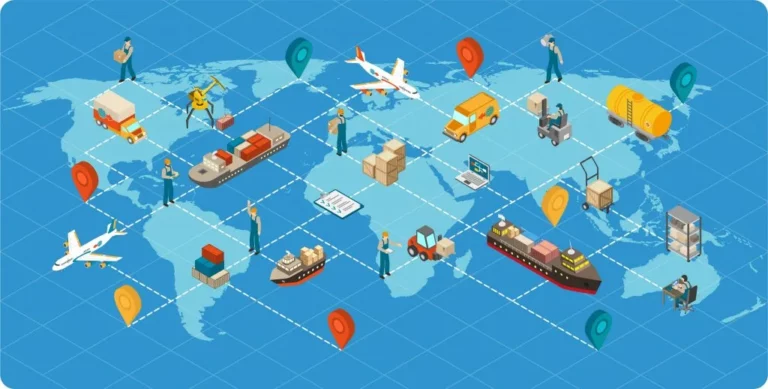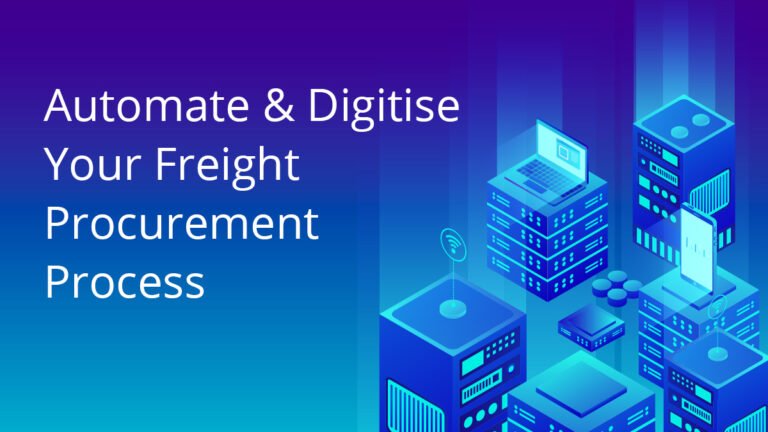Top 12 Supply Chain Management Tools For Your Business
Table of Contents
Efficient supply chain management is crucial for business success. Delays, lack of visibility, and rising costs can disrupt operations, making it essential to invest in software supply chain management solutions. The right tools help streamline procurement, logistics, and inventory tracking, ensuring smooth operations.
With numerous supply chain management software companies offering different features, choosing the right one can be overwhelming. This guide explores the top supply chain management software in 2025, highlighting key features, limitations, and use cases to help businesses select the best SCM software for their needs.

Essential Insight:
9 Factors to Elevate Supply Chain Management
1. GoComet
GoComet is an AI-powered platform that automates global supply chain operations, from procurement to delivery. It streamlines freight management by automating vendor price comparisons, helping businesses secure the best shipping rates with minimal effort. Its real-time tracking feature provides complete visibility, offering instant alerts on delays and estimated arrival times.
The platform also leverages AI-driven analytics to optimize routes, reduce costs, and improve overall logistics efficiency. However, it may not offer detailed SKU-level tracking, which could affect inventory accuracy. For businesses looking to enhance logistics and streamline operations, GoComet is a leading supply chain management software provider offering efficiency and cost savings.

Ratings and Reviews (as of March, 2025):
- G2 Rating: 4.8/5
- Gartner: 4.9/5
Testimonials:
“We have been using GoComet for a year and a half now and we love it. They offer unique features like Predictive ETA, bulk upload of trackings, real-time vessel tracking, Demurrage and Detention information, and much more. With all these features, the platform is still easy to use and understand. Their team is also very supportive and addresses any doubts we have efficiently and promptly.”
2. Project44
Project44 is a real-time supply chain management platform for shippers and logistics providers. It offers live shipment tracking across all transportation modes, helping businesses react to delays instantly.
The platform integrates with TMS, ERP, and other logistics systems, ensuring smooth data flow and reducing silos. Its AI-driven analytics predict disruptions, optimize routes, and improve decision-making. However, implementation takes time and resources, advanced features are costly, and tracking data may sometimes be inconsistent.
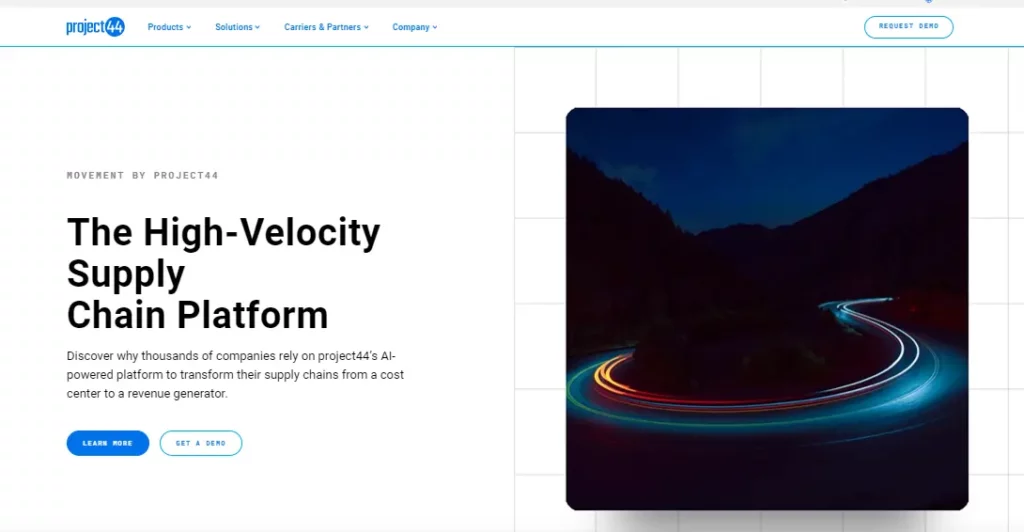
Reviews & Ratings (as of March, 2025):
- G2 Rating: 4.7/5
- Gartner: 4.7/5
Testimonials:
“The tool is easy to use and easy to implement. Great collaboration with our customer success manager. What stops me from giving an outstanding rating is frequent issues with data quality and a technical support that could be more effective.”
Maximize Efficiency:
60+ Questions for Choosing Supply Chain Tools
3. FourKites
FourKites is a real-time supply chain management platform that helps businesses track shipments and inventory with accurate, live updates. It connects with multiple data sources to improve delivery visibility and reduce uncertainty.
The platform’s AI-powered analytics predict delays, optimize routes, and help businesses plan for disruptions. It also enhances collaboration between suppliers, carriers, and customers through built-in communication tools. However, customization requires expert setup, and new users may face a learning curve due to the platform’s complexity.
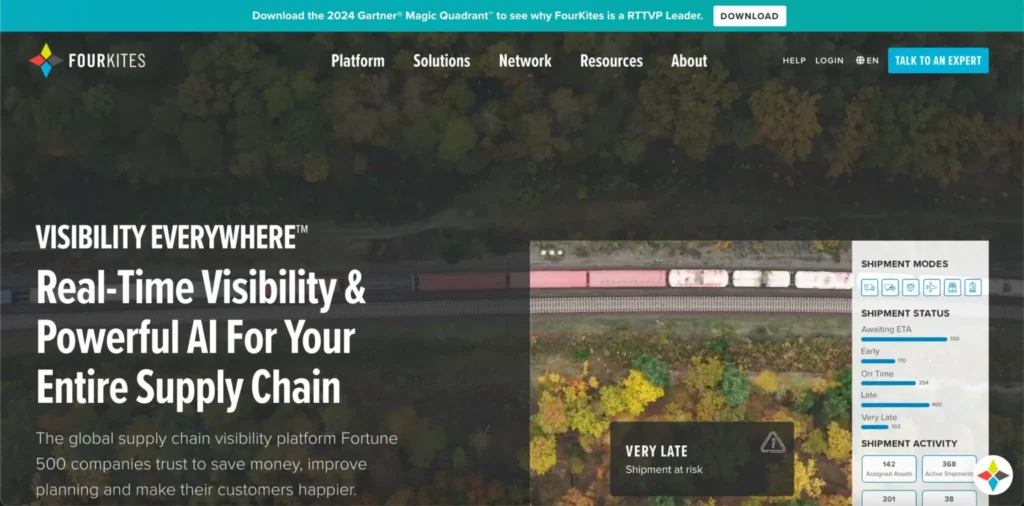
Ratings and Reviews (as of March, 2025):
- G2 Rating: 4.8/5
- Gartner: 4.6/5
Testimonials:
‘We experienced quite a bit of turnover with our assigned project managers. In my opinion we cycled through them at a set cadence that was too fast. The implementation ran into significant friction with the carrier onboarding aspect. Connectivity has refined the process since.”
4. Oracle SCM Cloud
Oracle SCM Cloud is a cloud-based supply chain management suite that covers inventory management, order fulfillment, and product lifecycle management. It provides end-to-end supply chain planning, including demand forecasting, inventory optimization, and production scheduling, helping businesses improve efficiency.
Its advanced product lifecycle management ensures seamless tracking from design to distribution. The cloud-based system allows real-time access from anywhere, enhancing flexibility. However, high implementation costs and complex navigation can be challenging for smaller businesses, and the onboarding process may take time due to the platform’s extensive features.
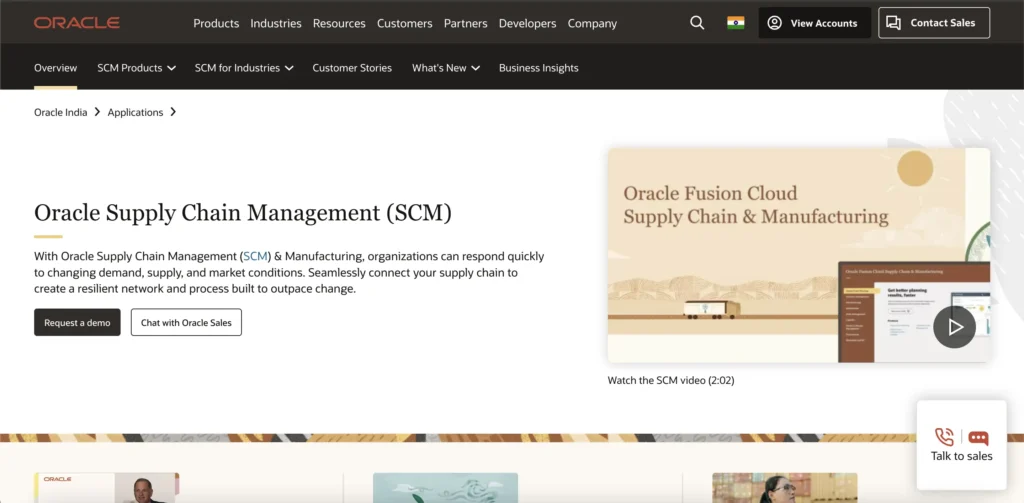
Reviews & Ratings (as of March, 2025):
- G2 Rating: 4/5
- Gartner: 4.6/5
Testimonials:
“Positive final outcome, challenges to optimize the solution to work with our volumes and to access product expertise – overall, above average”
5. Epicor SCM
Epicor SCM provides industry-specific supply chain management solutions, catering primarily to manufacturers. It enhances demand forecasting using AI-driven analytics, helping businesses reduce stockouts and overstock. The platform also improves inventory and supplier management, ensuring efficient stock tracking and coordination.
With end-to-end order tracking, businesses can monitor shipments from placement to delivery in real time. However, limited third-party integrations may require additional setup, and high upgrade costs can add to long-term expenses. Additionally, implementation can be complex, especially for companies with existing ERP systems.
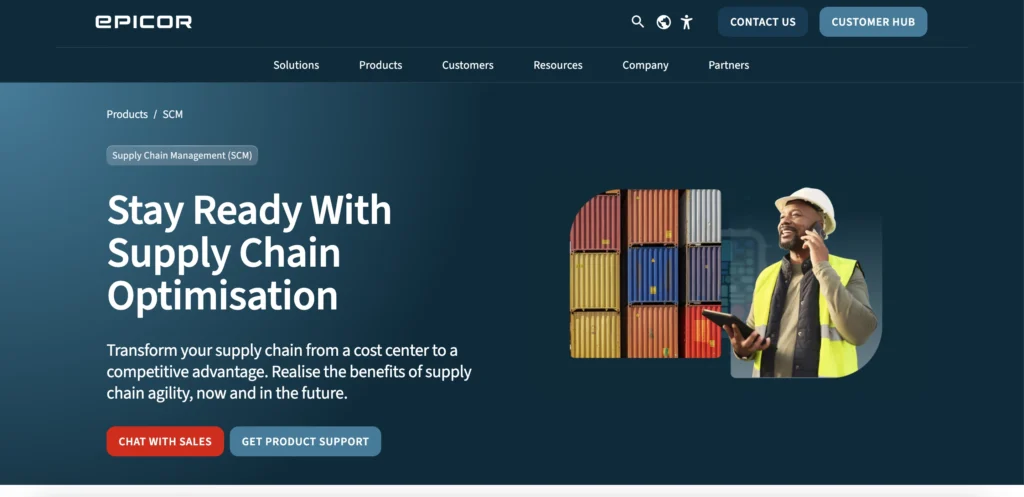
Reviews & Ratings (as of March, 2025):
- G2 Rating: N/A
- Gartner Rating: 4.2/5
Testimonials:
“I feel like Epicor is growing and becoming better suited to the needs of the user.”
6. Blue Yonder
Blue Yonder provides AI-powered supply chain planning and execution, helping businesses improve demand forecasting, inventory management, and logistics optimization. Its machine-learning capabilities enhance decision-making by adapting to market shifts.
The platform’s real-time inventory tracking prevents overstocking and shortages, while advanced analytics offer data-driven insights for better operations. However, complex setup requires expertise, high costs may not suit smaller businesses, and customer support response times can be slower due to platform complexity.
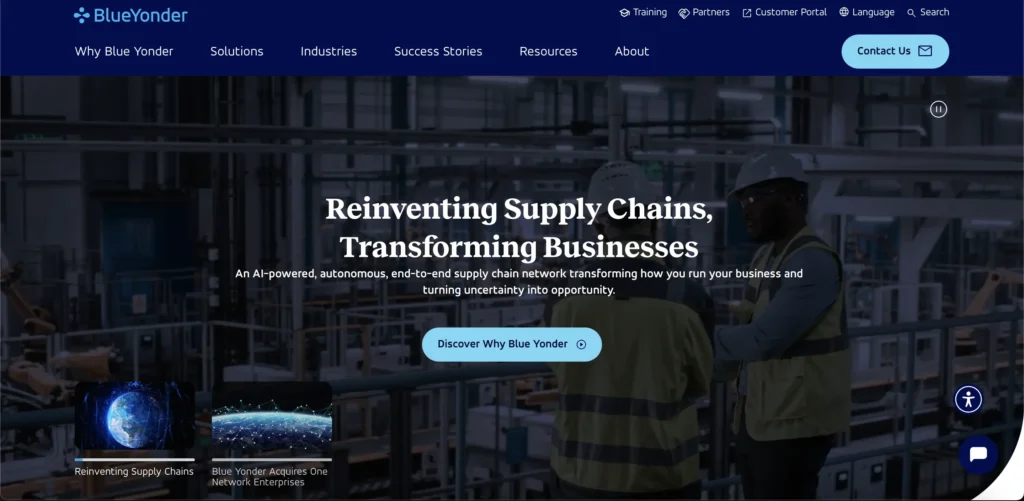
Reviews & Ratings (as of March, 2025):
- G2 Rating: 4.1/5
- Gartner Rating: 4.1/5
Testimonials:
“The Blue Yonder software functions as documented. They do listen but have become less responsive to problems as they are discovered.”

7. SAP SCM
SAP SCM is a powerful supply chain management solution designed to streamline demand planning, logistics, and production. It connects manufacturing and distribution systems, ensuring real-time data flow and better decision-making.
The built-in analytics help businesses optimize operations and reduce inefficiencies. However, setting it up takes time and expertise, and customization can be expensive, making it a better fit for larger companies with complex supply chain needs.
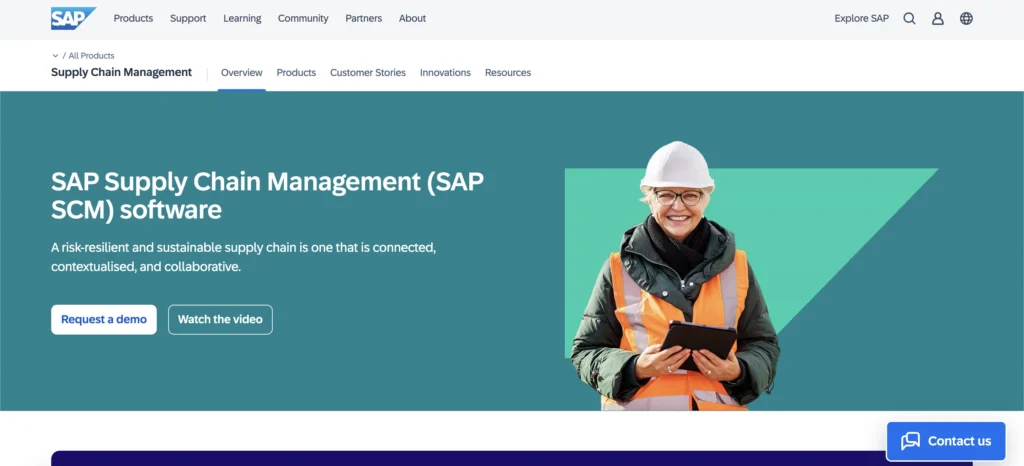
Reviews & Ratings (as of March, 2025):
- G2 Rating: 4.1/5
- Gartner Rating: 4.2/5
Testimonials:
“My overall experience with SAP was good as I can easily get things planned through analytics provided by the supply that generates demand for the product as a result business achieves efficiency on real time basis.”
8. Kinaxis RapidResponse
Kinaxis RapidResponse is built for fast-moving supply chains, helping businesses quickly adjust to demand shifts and potential disruptions. Its real-time visibility gives companies a complete view of their operations, while scenario planning tools allow teams to model different supply chain outcomes before making decisions.
The platform also ensures supply and demand stay aligned, reducing inventory risks. However, its high cost makes it more suitable for large enterprises, and its complexity requires significant training to maximize its benefits. Additionally, third-party software compatibility can be limited, which may pose challenges for businesses using multiple systems.

Reviews & Ratings (as of March, 2025):
- G2 Rating: 4.0/5
- Gartner Rating: 4.6/5
Testimonials:
“The software has all the features of an online tool with aggregations and reporting at all levels. However, the core of the tool should be the statistical forecasting that the software fails at miserably.”
9. Logility
Logility helps businesses forecast demand accurately, reducing the risk of overstock and stockouts. Its inventory optimization aligns stock levels with real-time and predicted demand, ensuring smooth operations.
The platform also streamlines order fulfillment, automating the process from placement to delivery. Its supplier collaboration tools enhance communication for more efficient procurement and inventory planning.
However, its outdated interface may feel clunky compared to newer platforms, and the high cost makes it less accessible for small businesses. Additionally, implementing the system takes time, requiring dedicated resources for full integration.
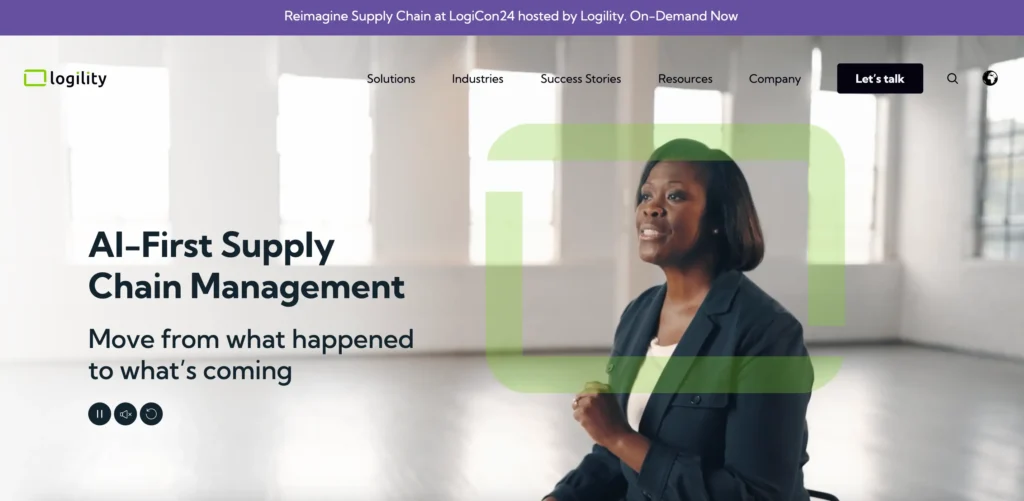
Ratings Reviews (as of March, 2025):
- G2 Rating: 4.2/5
- Gartner Rating: 4.6/5
Testimonials:
“Very solid experience using Logility. We’re using the software to Forecast our sales and replenishment. Product can run slowly at times and hard to understand some of the commands, but the interface is easy to see.”
10. Körber Supply Chain
Körber Supply Chain specializes in warehouse and transportation management, helping businesses optimize storage, streamline order fulfillment, and improve labor allocation. Its advanced warehouse management system enhances inventory accuracy and maximizes space utilization.
The platform is highly scalable, making it suitable for both small businesses and large enterprises. Seamless integration with enterprise systems ensures smooth supply chain operations.
However, its focus on warehouse operations makes it less ideal for end-to-end supply chain management. High costs may be a challenge for smaller businesses, and customer support response times can sometimes be inconsistent.
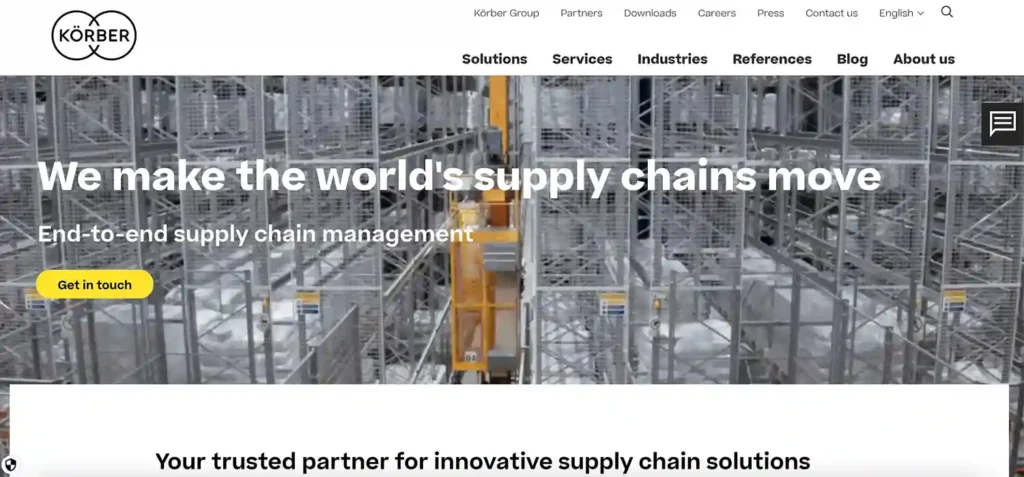
Reviews & Ratings (as of March, 2025):
- G2 Rating: N/A
- Gartner Rating: 4.5/5
Testimonials:
“Like the general direction things are headed. The voice connector, automation options, and future state of WMS are all cool. Wish there were more technical insight on some products.”
11. E2open
E2open is a supply chain management platform that enhances visibility, collaboration, and automation across inventory, logistics, and supplier networks. It integrates data from multiple sources, providing businesses with a real-time, end-to-end view of their operations. Automated supply chain execution minimizes manual tasks, while collaborative planning improves coordination between manufacturers, suppliers, and logistics partners.
The platform also includes global trade compliance tools, helping businesses navigate customs and regulations. However, its advanced features come at a high cost, the interface can be complex for new users, and system updates may take longer than expected.
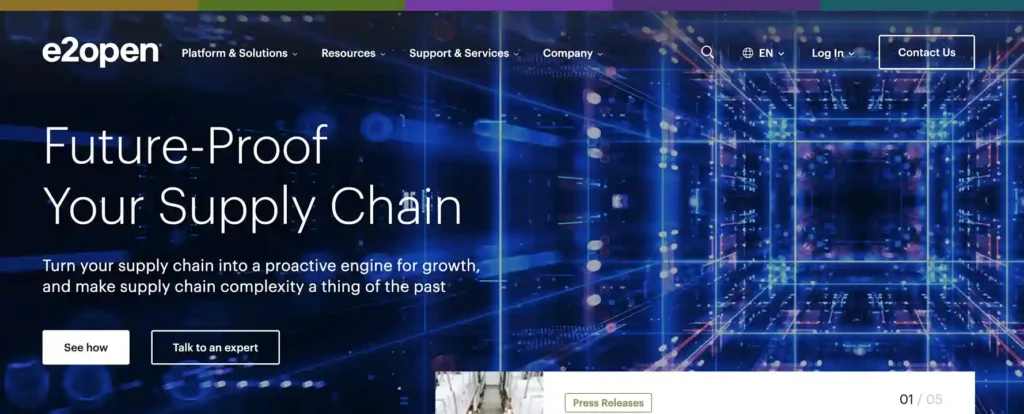
Reviews Ratings (as of March, 2025):
- G2 Rating: 4.1/5
- Gartner Rating: 4.6/5
Testimonials:
“Like the general direction things are headed. The voice connector, automation options, and future state of WMS are all cool. Wish there were more technical insight on some products.”
12. Shippabo
Shippabo simplifies international shipping by providing tools for freight booking, shipment tracking, and logistics management. Businesses can compare carrier options, book freight easily, and track shipments in real-time to ensure transparency.
The platform also automates shipping documentation, reducing errors and improving compliance. Its user-friendly interface enhances collaboration between suppliers, carriers, and customers. However, it lacks advanced features for complex logistics operations, doesn’t have a dedicated mobile app, and its carrier network may be limited depending on the region.

Reviews & Ratings (as of March, 2025):
- G2 Rating: 4.8/5
- Gartner Rating: N/A
Testimonials:
“UI is pretty decent, have a hard time explaining the know how’s to more elderly colleagues but especially for certain tasks I can just show them how and they are able to grasp it. Some glitches once in a while, when working and have multiple projects open it takes an extra second to load, I’m pretty sure the internet is stable hence must be the tool.”
Final Words
Choosing the right supply chain management software depends on your business needs. Whether the focus is on visibility, automation, or collaboration, the right tool can streamline operations and improve efficiency.
There is no single perfect solution. Scalability, integration, and cost should guide the decision. The best software is the one that keeps a business agile, competitive, and ready for future challenges. Making an informed choice ensures a stronger, more resilient supply chain.
